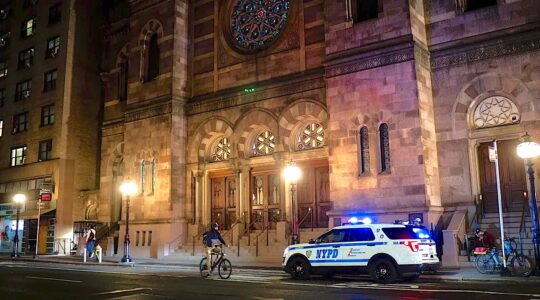The best time of year to visit Florianopolis is summertime — which, in this idyllic corner of southern Brazil, starts sometime between Halloween and Thanksgiving.
That’s when a mild, pleasant spring gives way to the glorious Miami-like weather and spectacular sunsets that make this one of South America’s most popular resorts. For North Americans, Florianopolis offers an appealing alternative to the Caribbean: a winter escape to a land of wide, sandy beaches, sparkling lagoons and green mountains, wrapped in an affordable package of cultural exoticism.
You’ll hear little English in this safe, peaceful region of Brazil, but plenty of Argentine Spanish and Paulista accents (Paulistas being denizens of Sao Paulo, who flock here en masse at Christmas). But who’s focusing on the ears? The island state of Santa Catarina, where Florianopolis is located, is famous for its visuals — not just the landscapes, but also its stunningly beautiful residents, tall, green-eyed blondes who disproportionately populate the pages of Vogue.
Indeed, its intriguing pan-European cultural mix is arguably what sets Florianopolis apart in a world of wintertime beach choices. Along the island’s southern coast, you can visit picturesque fishing villages that feel lifted directly out of 19th-century Portugal and the Azores. The German influence is notable in the physical characteristics and even the vocabulary of many locals, while Italian elements are evident in the cuisine, heavy on pizza, pasta and seafood.
Brazilian Jewry, concentrated in the country’s south, has an active outpost here. The Associacao Israelita Catarinense (Catarina Israelite Association; www.aic-sc.org.br, site in Portuguese), based in Florianopolis, is celebrating its 20th anniversary this year, with growing participation from young transplants and an active schedule of religious and cultural events. Chabad is also a significant presence, and the community’s Chanukah festivities grow more visible each year.
So why am I writing about Florianopolis in August? For starters, while South America is affordable once you get there, airfare to that continent is prohibitively high. Depending on the length of your trip, the cost of your flight could sap half your vacation budget — easily more than $1,200 roundtrip from New York, typically with a stop in Rio or Sao Paulo.
Planning ahead is therefore essential. The best strategy is to set up a flight alert on Kayak.com or another site; troll Travelzoo.com and other discounters regularly, and jump when a fare sale or a package deal pops up. (Even those of us who typically shun package vacations should consider them for South America: a flight-hotel-car deal is sometimes cheaper than a flight alone, and still offers reasonable flexibility.)
Another reason to plan early is that while January is hot and dry, it’s also crowded. If low-key atmosphere is more important to you than sizzling heat and bustling street scenes, consider October and November, when daily highs are in the 70s, or March, when hotels drop their prices.
Some call Florianopolis a Brazilian Ibiza, though that’s not quite accurate. While a jet-setting, nightclubbing scene is available for those who seek it out, Florianopolis is a laid-back, bohemian, nature-worshipping kind of place. Yet the Spanish comparison is not wholly off-base. Floripa’s urban areas are culturally reminiscent of Barcelona: surprisingly cosmopolitan, appealingly left of center — one of those international meccas for the young, artistic and counter-cultural.
Florianopolis is a substantial island, long and slender from north to south; with landscapes ranging from urban density to lush wilderness, it has diversity enough to suit a range of vacation styles. Swimmers can choose between the west coast’s peaceful bay waters, the crystal-clear lagoons of central Floripa, and the crashing Atlantic surf that draws ambitious wetsuiters from around the Americas.
Kayaking, rock climbing, horseback riding on the beach and snorkeling are all popular diversions — as are shopping, dancing and dining out, which are widely available in Lagoa da Conceicao, the scenic central lagoon around which cluster the area’s greatest concentration of high-end eateries, dance clubs, and upscale boutiques.
Just across the bridge from mainland Brazil lies the provincial capital of Florianopolis; it is charming and walkable, and peppered with pink colonial-style buildings, though short on real attractions. Most visitors rent a car to really explore this island’s sprawling, lovely landscape of hidden coves, charming beach towns, and spontaneous street festivals.
Support the New York Jewish Week
Our nonprofit newsroom depends on readers like you. Make a donation now to support independent Jewish journalism in New York.
Those who prefer civilization stay in the island’s north, in established resorts like Praia dos Ingleses (“Beach of the Englishmen”) and Canasvieiras. The wilder, less-visited southern part, with its windswept beaches, draws those seeking solitude and surf; in this region, the town of Campeche is a favorite destination for many.
Kosher eaters and vegetarians will find a lot to like about Florianopolis. Unlike in much of Brazil (and nearby Argentina), meat is not king here: fresh fish is, along with a plethora of salads and fruit-based dishes that exploit the region’s tropical bounty.
The island’s size and diversity make it relatively easy to rent a vacation flat and prepare meals from market-fresh ingredients. Wash them down with the delicious local juices, passion fruit and acai — or the sweet, strong caipirinhas, made with local cachaca liquor, typical of the Brazilian fondness for all things sugary.
You’ve come much farther than the Caribbean, and amid this heady cultural brew, you may just want to stay.
The New York Jewish Week brings you the stories behind the headlines, keeping you connected to Jewish life in New York. Help sustain the reporting you trust by donating today.




